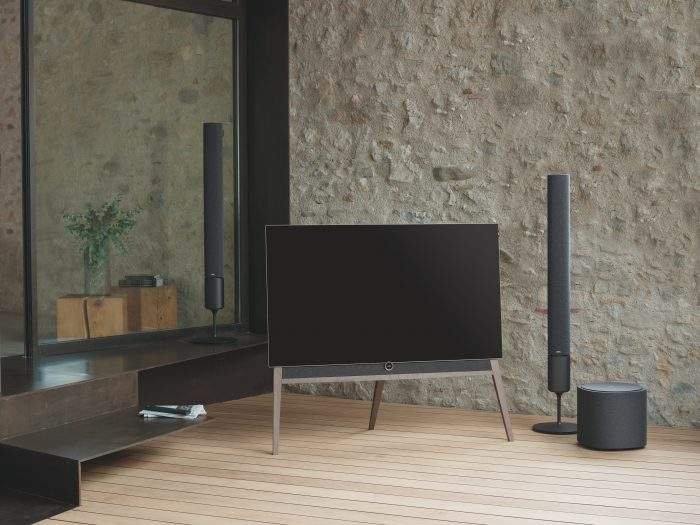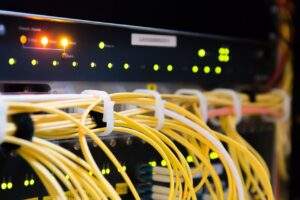How To Connect Speakers To TV Without Receiver In 2021

Have you ever experienced a broken receiver? If you do, you know that you will be terrified of knowing that there is no way to hear audio from your speakers. Fortunately, the lack of a receiver is not a total loss.
Even without a receiver, there are other ways to link your speakers to your TV. Here, you will learn about four different options for connecting your speakers to your TV. Hopefully, you do the best job for your home theater.
What is a receiver?
What is a receiver anyway? Why is that so important? A receiver is a device that connects your audio sources to your TV or your home theater.
The receiver “receives” all audio data and plays it to your audio device for a better experience. But this is not the only thing receivers do.
Connecting to your video sources is another important task of the receiver. They are no longer just for audio sources, as the receiver can now switch to different video devices connected to it.
They are similar to routers in that they transfer data from audio and video sources to other displays and speakers.
Recipients can also act as an amplifier for most speakers. If you have full speakers in the house, you will be happy to know that the receiver can be connected with two or more speakers.
It acts as an amplifier of sound when displaying the video that comes with it. To easily control the connection, the receiver always comes with a remote. The remote helps you to select and connect any audio and video device.
What if I am not a recipient?
Now that you know how important a receiver is, you understand how it can harm your home theater experience. Again, the receiver is not the only way to connect your audio and your video. Here are 4 alternative methods.
1.Using Bluetooth.
You are well aware of wireless connections, so you may be surprised to learn that you can only use a Bluetooth connection to connect your speakers to your TV.
Of course, since you do not have to purchase other equipment to connect your audio and video, a wireless network is such a huge relief. Also, there are no wires scattered around the house.
To connect your speaker to your TV, you only need to turn on the speaker and make sure it supports Bluetooth. If not, you can avoid using a Bluetooth transmitter, but for another day!
Turn on the TV and set up a connection with the speaker after you find it on your TV. Different devices have different instructions on where and what to press, but this is basically how you connect the two devices.
However, the problem with Bluetooth connections is that not all TVs and speakers support wireless connections. Of course, the only Bluetooth connection is a smart TV, so if you do not use a smart TV, you will not be able to use a wireless connection.
2.Using two-channel amplifiers.
If your TV does not have Bluetooth-enabled, do not worry because there is another way to connect your speakers. The most popular choice is two-channel amplifiers.
Two-channel amplifiers serve as receivers for the speakers and your Telev. All you have to do is connect the audio to the TV’s HDMI port. After that, use the output connection of the amplifier to connect to the speaker.
If you think about it, a two-channel amplifier literally acts as a receiver, so there is not much difference in terms of connection.
However, the amplifier does not consume much power, so it is a good idea to check both the power of the speaker and the TV.
3.Using a direct connection.
For this option, it may not work depending on your luck. The former uses speaker wires unless direct connections work a lot like wireless connections. The direct connection connects the speaker plug directly to the TV port.
For some, this technique works, but most of the time, it does not. There is not much science behind this, especially when there are no receivers and direct connections are not the most recommended action. However, it is worth the shot.
Note that when direct connections are working, they also produce very low sound quality.
If you have great speakers and the audio sounds awful, this is a sign that the direct connection is not working.
Sure, you listen to audio, but it destroys the quality that the speakers promise. You might want to try a wireless connection, amplifier, or hub.
4.Using the hub.
If you’ve never heard of a hub that connects audio and video, you’re glad to see it now.
A hub is a type of repeater that is often used to connect computers and create local area networks. However, its concept is very similar to how the receiver works; Therefore, it can be used as an alternative.
The hub is a smaller device than the receiver. It is very cheap, so it is a plus for those who are planning to get a hub.
However, you should be aware that there are two types of hubs – active and passive.
The active hub is also called the “intelligent hub” because it examines the algorithms of the data before transmitting the data. The passive hub, on the other hand, does not investigate any algorithms.
You need a passive hub if you want to use the hub as a receiver because if you buy an active one, it does not really matter. Also, passive centers are very cheap, so this is the right choice.
And there you have it. Although receivers are still a traditional option, there are times when they break or your device is not in the package. With these four options, you do not have to worry about the lack of a receiver.







